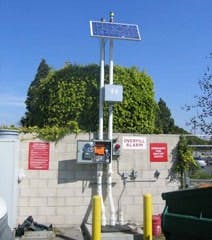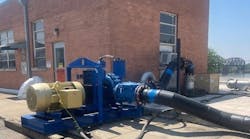Environmental remediation is no quick fix. It can take two to three years of constant extraction to clear groundwater and soil of impurities resulting from gasoline and other petroleum-related contamination. As the government continues to emphasize ecological improvements, environmental service organizations are being tasked with new remediation projects each day that often stretch their resources thin. Some are turning to remote monitoring technology to boost efficiency and cut costs.
Connecting to Remote Sites
San Francisco-based TEC Accutite’s environmental division specializes in assessing and analyzing site conditions and executing necessary cleanup schemes. Full-scale remediation involves complex processes including dual-phase extraction, chemical oxidation and soil vapor extraction. Complying with state regulations requires ongoing sampling and analysis for some procedures, which TEC also manages.
With remediation sites across Northern California, TEC sought a way to monitor that equipment and processes were running correctly without sending a staff member to each site repeatedly.
“In addition to the time and cost savings, automating monitoring and sampling processes would enable us to reduce our carbon footprint by eliminating daily trips to each site,” said John Murphy, VP chemist and senior project manager.
TEC Senior Project Manager Jim Hanlon had previously worked with Sensaphone monitors at remote installations. The units provided data capture for daily reports, and they would fax and phone alerts if the remediation system developed a problem. Looking for even more advanced capabilities, TEC purchased a remediation system featuring a Sensaphone SCADA 3000 monitoring system. The SCADA had greater input and output channel options, and it gave TEC the ability to program in both conventional ladder logic and the “C” programming language.
Virtual Sampling
Murphy set out to develop a way to fulfill the requirements of state air quality permits without sending someone to the sites. That meant automating the daily process of taking samples from the granulated activated carbon (GAC) vessels that control air emissions. Using the SCADA 3000 , Murphy created a device that duplicates laboratory protocols for calibrating, purging, sampling and analysis. Now, readings are taken automatically and faxed to the office, eliminating manual sampling.
“We now have access to real-time documentation of results, and the data updates are more frequent. This also improves the consistency of our data acquisition process. We know it’s the same every time,” Murphy said. “Using the SCADA 3000, we can send personnel to the remediation sites as needed. Often, this means a monthly visit instead of daily.”
“Not only do we have total control by writing our own software, but we can update it from our office. I can also start or stop any device in the system from my computer or from any telephone. This is a huge advantage over systems we have used in the past,” Hanlon said.


